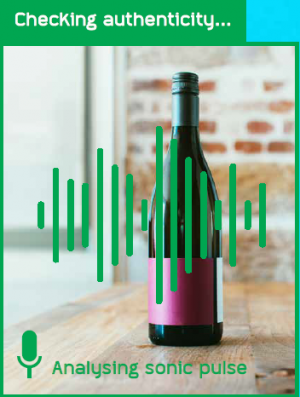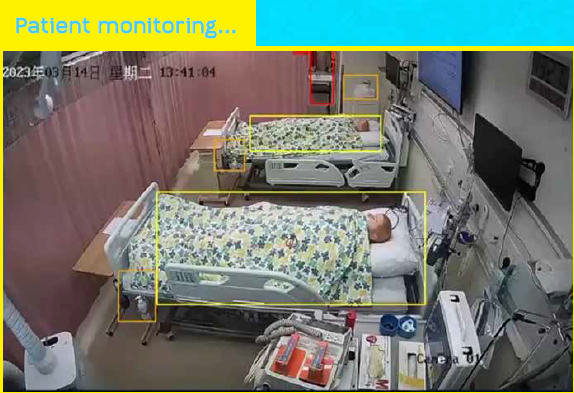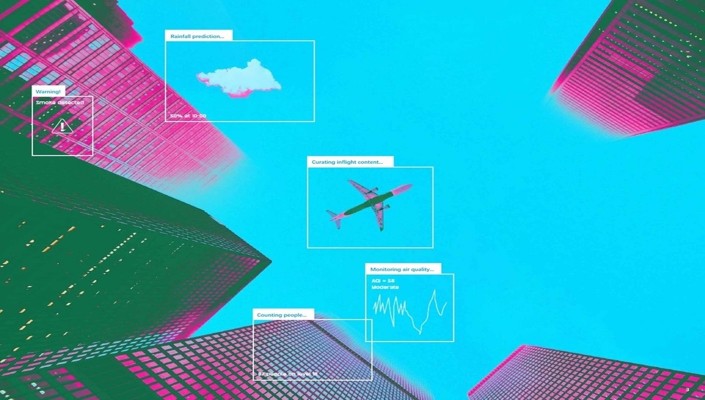Edge AI: The Smart Way to Build Smarter Cities
How Edge Computing and Artificial Intelligence enables cities’ digital infrastructure and quality of life.
The HKSAR Government’s ambitious Smart City Blueprint for Hong Kong set out a host of far-reaching initiatives – from Smart Travel to Smart Environment to Smart Economy – all designed to transform Hong Kong from an iconic urban location into a world-class smart city. Professor Cao Jiannong is now leading a series of PolyU research initiatives to help realise that vision.
The smartest cities aren’t necessarily the ones with the most gadgets, but those that use technology intelligently to improve the efficiency of organisations and quality of lives of citizens. Most smart city developments rely heavily on cloud connectivity and Internet-of-Things (IoT) technology to provide the infrastructure and scalability required to process vast amounts of data. But, according to Professor Cao Jiannong, Director of PolyU’s Research Institute for Artificial Intelligence of Things (RIAIoT), that won’t be enough for today’s emerging and future smart city applications.
Edge computing takes centre stage
“Cloud computing runs computation tasks and applications on cloud servers in data centres, with all the data collected from end devices. That consumes network bandwidth, creates processing delays, and raises privacy concerns,” Professor Cao said during a recent TechTalk hosted by the Hong Kong Academy of Engineering Sciences, entitled “Collaborative Edge Computing for Ubiquitous AI”.
“Current centralised architectures can cause bottlenecks in the performance of systems and applications. Since 2021, edge computing has become the trend and the real battleground is now at the edge,” he remarked.
“Edge computing pushes computation out to base stations, edge servers, and gateways at the periphery of the network. Offloading computation tasks from resource-limited IoT devices to more powerful, resource-richer edge nodes can lower costs, deliver results in real time, and preserve privacy.”
When it comes to smart cities, the real game changer could be Edge AI, which enables distributed IoT devices to use embedded AI models to analyse data and make intelligent decisions autonomously. While IoT sensors and devices gather the data, AI analytics at the edge of the network identifies patterns, makes predictions, unifies data streams, and improves data quality.
“In this setting, AI computation is done near the user at the edge, close to where the data is located and used. It doesn’t even need a network connection,” Professor Cao said. “Through the fusion of IoT and AI technology in edge devices, smart cities could soon become even smarter.”
Already a reality
Offering ultra-low-latency data processing and intelligent decisionmaking at the edge of the network, Edge AI opens up exciting new possibilities for increasing the sustainability of urban development and improving quality of life.
One of the most recent examples is a low-cost, non-intrusive food freshness monitoring app that uses an ordinary smartphone camera to determine in real time if something is edible or past its prime. The user simply takes a photo of the food item, which is uploaded wirelessly to an Edge AI model. It uses image-to-image translation and a generative adversarial network (GAN) to convert the ordinary RGB image into the HSI format used in high resolution image processing. The detailed image data is then analysed to determine the “freshness level” of the item to an accuracy of 90-92%.
The “HearLiquid” app developed by Professor Cao and his research team takes things a step further, informing users whether the bottle of wine or spirits they are buying is the genuine article or a realistic counterfeit.

Using a smartphone’s speaker and microphone, the app sends a sonic pulse through the bottle and captures the returning echo. An Edge AI model processes the result, providing a definitive REAL or FAKE determination in seconds, with 92-95% accuracy.
Other solutions include Edge AI Realtime Video Analytics, which uses AI models deployed on edge nodes to protect the privacy of hospital patients in real time, by monitoring critical behaviours, such as hand hygiene, and detecting common dangers like slips and falls.

Edge AI-powered autonomous pipeline robots
Edge AI is also transforming how, where and when we use robots. Professor Cao and his team at RIAIoT recently showcased a novel, Edge AI-empowered robot designed to autonomously inspect critical underground pipelines, such as sewers and storm water drains.
Equipped with a high-resolution camera and a searchlight, the highly mobile six-wheeled device easily traverses horizontal and vertical pipe systems. While the previous generation of inspection drones required a communications link to a data centre, the RIAIoT design is completely autonomous.
“Conducting all of the data processing and control on the robot itself allowed us to replace manual detection with sophisticated machine learning intelligence that can automatically identify and classify defects. Therefore, our robot can provide convenient, intelligent, and effective service for current pipeline inspection,” Professor Cao explained.
Collaborative edge computing
Emerging advanced applications demand more computing power at the edge, and impose higher requirements in terms of real-time responses and intelligence. Professor Cao and researchers at RIAoT are now working on developing the next generation of smart AIoT solutions, with the goal of overcoming obstacles to building a smart, connected society.
One of the most promising areas of interest is Collaborative Edge Computing, where cloud, edge and terminals join forces to support AIoT applications. Professor Cao and his team are pushing the development of smart city applications such as autonomous vehicles, industrial IoT and the metaverse, with a project entitled “High-performance Collaborative Edge Computing Enabling Smart City Applications: Framework and Methodologies’’. The study addresses key challenges, including large-scale resource management, performanceguaranteed task scheduling, resourceaware Edge AI and secure data sharing.
“This project aims to build a new smart city computing infrastructure, which is supported by Collaborative Edge Computing, including edge/cloud collaboration, city-scale edge network deployment, and built-in AI services,” Professor Cao explained.
Current initiatives include research into the “Efficient Scheduling of Integrated Cloud-Edge-End Computing Power for AI-enabled Applications.” This project proposes a systematic framework for the management and scheduling of integrated-Cloud-Edge-End computing power to support resource-hungry and latency-sensitive AI-empowered applications, and contributing to the construction of the national computer power network.
More recently, large language models (LLMs) have attracted a lot of attention and shown great potential in AIoT applications. However, current LLMs heavily rely on cloud, and it is very challenging to deploy them on heterogenous edge devices. Professor Cao’s team is developing a general edge-LLM inference framework using Collaborative Edge Computing.
“Ultimately, our work at RIAIoT will enable emerging advanced smart city applications to flourish in Hong Kong, and establish a first-mover advantage for the city in new computing infrastructure,” he added.

Professor Cao Jiannong
• Dean of Graduate School
• Otto Poon Charitable Foundation Professor in Data Science
• Chair Professor of Distributed and Mobile Computing
• Director of Research Institute for Artificial Intelligence of Things
• Director of University’s Research Facility in Big Data Analytics
Through the fusion of IoT and AI technology in edge devices, smart cities could soon become even smarter.
- Professor Cao Jiannong






